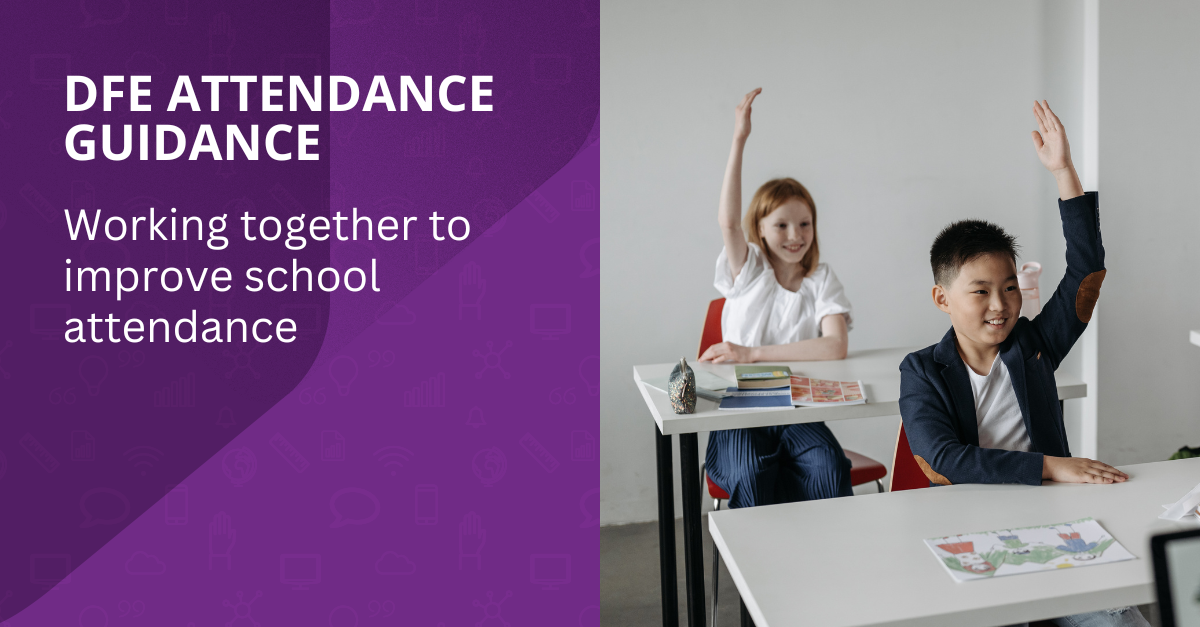Working Together to Improve Attendance: Key changes and updates
Following feedback from the sector, the DfE’s guidance, Working Together to Improve School Attendance, has been updated to:
- Clarify the link between improving attendance and wider school culture
- Place more emphasis on the importance of working in partnership with families to find supportive routes to improve attendance
- Reflect changes to the law on keeping school attendance and admission registers
- Set out the new National Framework for issuing penalty notices and reflect changes to the law
- Change ‘parenting contracts’ for attendance to ‘attendance contracts’ to better reflect the agreement between parents, schools and/or local authorities.
Here we see the changes as outlined by the DfE on page 7 of the new guidance document.
Changes for Schools
The expectations of schools have been updated to:
- Clarify where the schools’ role starts and ends in relation to pupils who are prevented from attending school due to physical or mental ill health
- Provide further clarification around medical evidence, additional support for pupils with special educational needs and disabilities and part-time timetables
- Explain the new requirements for schools on data sharing introduced through the Education (Information about Individual Pupils) (England) (Amendment) Regulations 2024
- Provide clarification of the expectations of schools’ senior attendance champions
- Expect schools to inform a pupil’s youth offending team worker of any unexplained absences.
Changes for Local Authorities
The expectations of local authorities have been updated to:
- Provide further detail to clarify additional attendance services that may be traded with schools, local authority responsibilities in relation to cross-border pupils and how to hold effective Targeting Support Meetings
- Allow flexibility in how local authorities work with independent schools to better suit the needs of different local independent schools
- Provider further detail on cross-partnership ownership of attendance improvement.
As we can see from these outlined changes above, the responsibilities of schools have grown, and there is now more that is expected of Local Authorities.
There is more information about the attendance responsibilities of parents, schools, academy trusts and governing bodies, and local authorities outlined in the Working together to Improve School Attendance guidance, the Summary document provided by the DfE offers a clear picture of these responsibilities.
Toolkit for Schools: Communicating with families to support school attendance
The Toolkit provided by the Department for Education as part of this legislation update provides examples based on research from Thinks Insight and Strategy (Thinks) to help school leaders, teachers, and attendance officers communicate with parents and carers about school attendance.
The Department for Education has reaffirmed its commitment to reducing absence in schools and recognises that this challenge can’t be met by schools alone, highlighting that government and wider support services action is also needed.
Tips in the toolkit for communicating with parents and carers about attendance
- Making sure communications on attendance are timely and regular - talk about emerging attendance patterns early
- Using the child’s name with accurate data specific to them rather than generalising
- Framing absences in lessons missed - a key insight from the research was that percentages can be less clear when describing the impact of absence
- Adopting positive, future-focused messaging which encourages parents and carers to consider the wider social benefits of school for the overall wellbeing of their child
- Naming and providing contact details of specific people in school who can help address attendance barriers
In the toolkit, there are further examples and more advice on how to communicate with parents and carers about attendance, as well as methods of communication, Face-to-face meetings, and example messages that can be used and adapted.

No comments.